The First Photographs of White Sands National Park?
5 Comments
On Friday, December 20, 2019, as White Sands National Monument was redesignated White Sands National Park, I was one of the few visitors inside the park. This ensured that I would be the first to photograph all 62 national parks, and possibly the first to make a photograph in White Sands National Park.
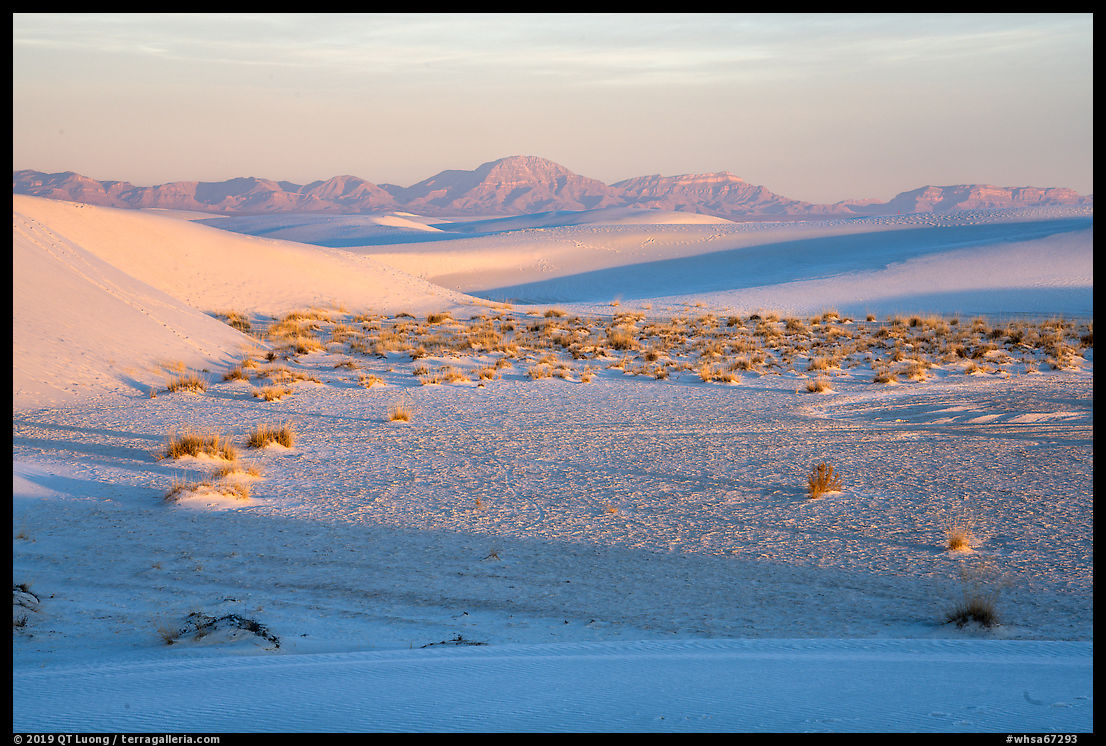
White Sands National Monument is the most visited National Park Service site in New Mexico, receiving around half a million visitors each year. This translates to 1370 per day, so you may wonder how it is possible that there were only a few visitors inside the park. The answer has to do with the fact that White Sands is an unusual park, surrounded by military lands including an active missile range that was the site of the first nuclear detonation. This results in tighter restrictions than in most other national park service sites. White Sands is essentially day use, opening around sunrise, and closing about an hour after sunset, with no campgrounds. Backcountry camping is allowed but limited to ten designated sites. Competition for those sites can be fierce, with aspiring campers lining up right at park opening time. However, when I inquired at the visitor on Wednesday, all the sites were still open. The possible reason? Although daytime temperatures were quite a pleasant sweatshirt weather, nighttime temperatures were forecasted to plunge into the 10s, a difference of 50 degrees F. When I returned to my car in the morning, I found an almost full one-gallon water jug frozen solid. I had something to drink in the morning only because I put my water bottle inside my sleeping bag.
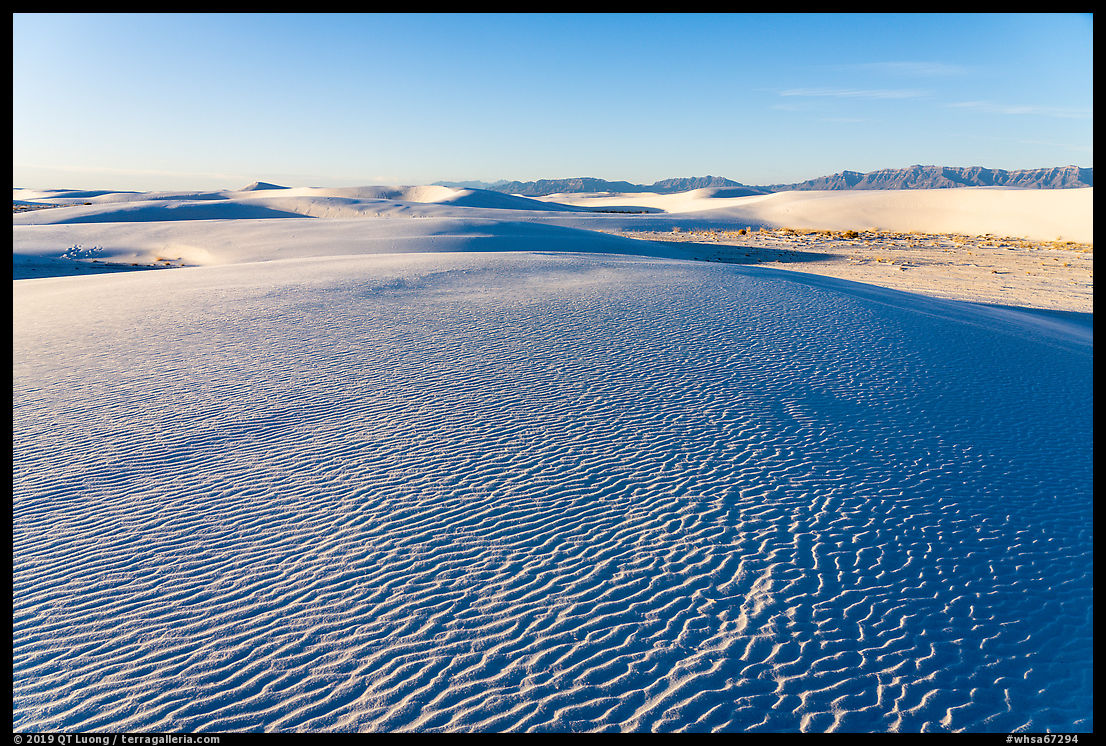
The military neighbors are also one of the factors that made it possible for the site to be redesignated so quickly. The redesignation bill included a land swap between the military and the National Park Service, and as such it was eligible to be included in the Defense Authorization Act for the fiscal year 2020. A frequent way for relatively inconsequential bills to pass in Congress is to attach themselves to bigger bills. The Defense Authorization Act sets next year’s military spending, which accounts for more than half of all federal government (discretionary) spending – too much? That’s pretty big, and also includes pet projects such as the Space Force. It was must-pass legislation, especially since failure to meet a midnight deadline on Friday, December 20, could have resulted in another government shutdown.
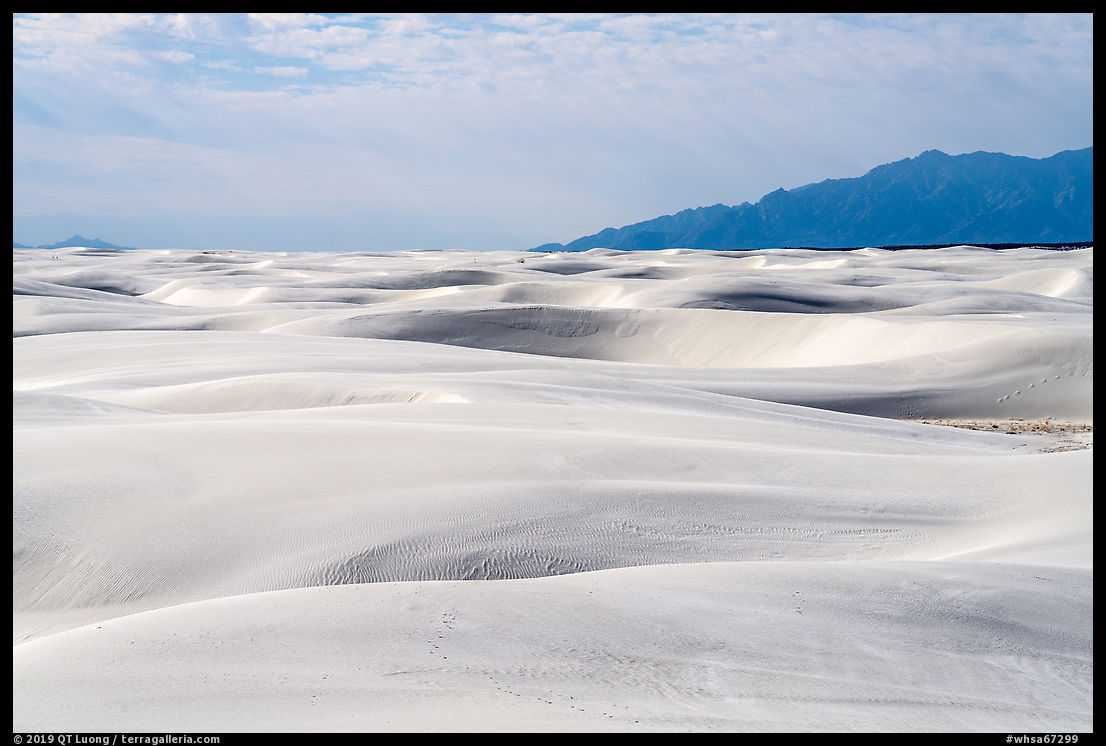
On Tuesday, December 17, as I flew into Albuquerque, Congress had passed the 2020 Defense Authorization Act and sent it to the President’s desk for signing. I would spend the next few days in White Sands National Monument, taking a break from hiking and photographing only for an interview with a reporter (see the news article in the Albuquerque Journal>: Photographer captures newest national park, or the original article with more photos), all the while waiting for the signature. Each time I stopped at the visitor center, I would ask “Did you become a national park yet?” only to be told by the ranger on duty that the president had not signed the bill into law and that it was unclear when he would do it, although time was running tight. At last, on Friday, December 20, the ranger informed me that the signature was expected by 5:30 PM (7:30 EST) that day. I obtained a backcountry camping permit so I could linger in the park. There were more campers than on Wednesday, probably because of the warmer weather and week-end, yet fewer than half of the sites were claimed. There were probably half a dozen people that evening in the park. I don’t know if and when they took photos, and I can only tell when I did.
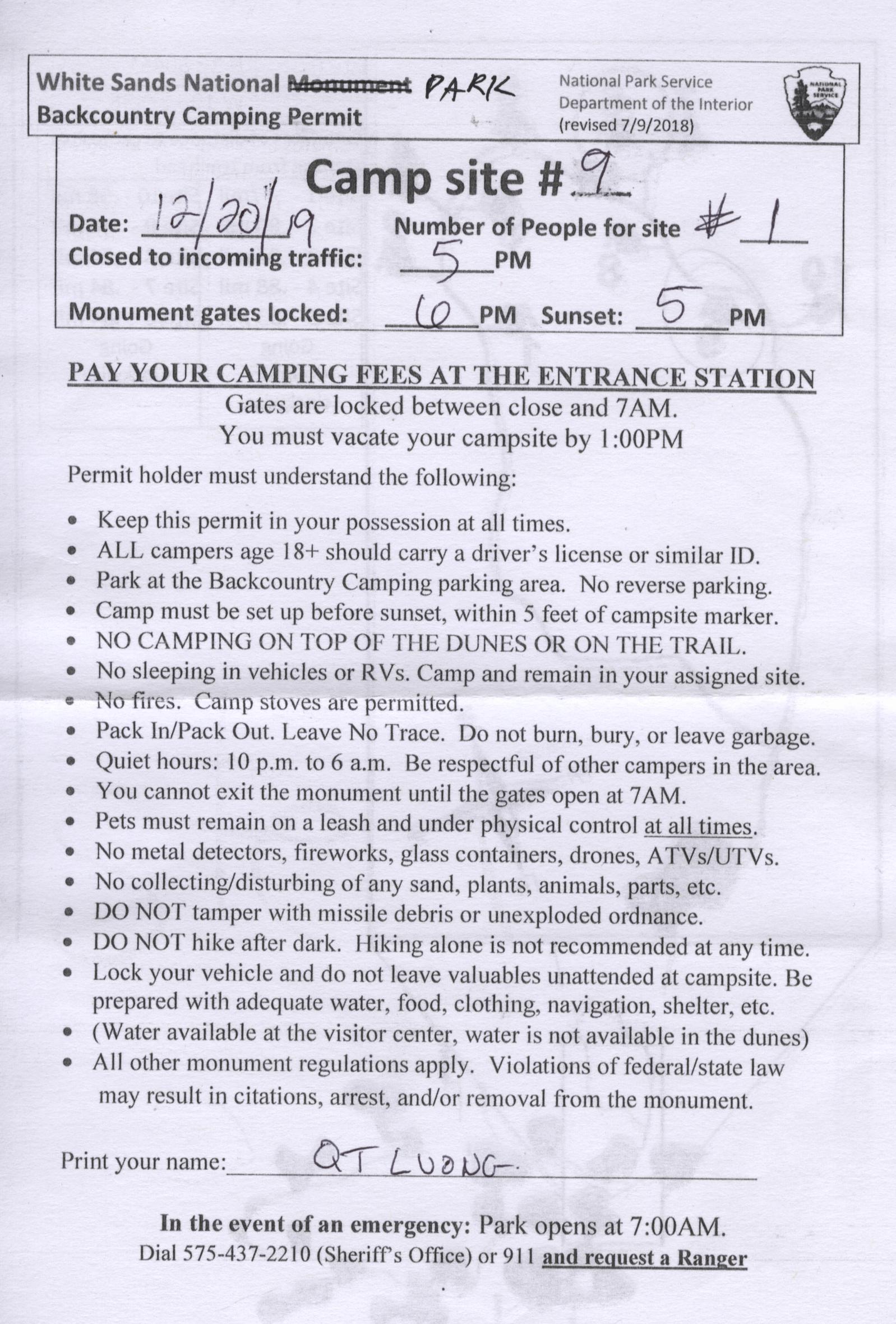
Backcountry camping in White Sands is a strictly regulated affair. The NPS requires campers to set their tents before dark, and prohibits hiking at night, because it would be so easy to get disoriented. When I mentioned to the ranger that I carried two different GPS devices, she warned that GPS isn’t reliable in the park because the nearby air force base is experimenting with GPS scrambling.
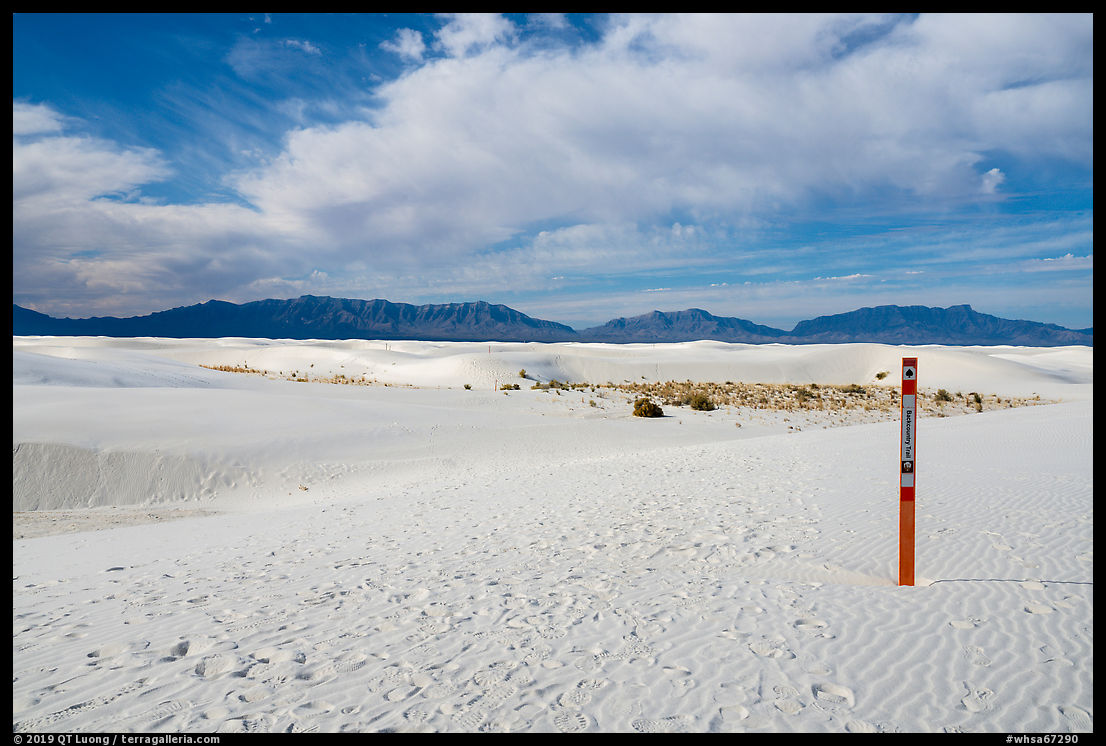
To get to the campsite, I hiked on the Backcountry Trail, a 2-mile loop which is marked with poles sticking out of the sand, placed at intervals regular enough that one can go from one pole to the next.
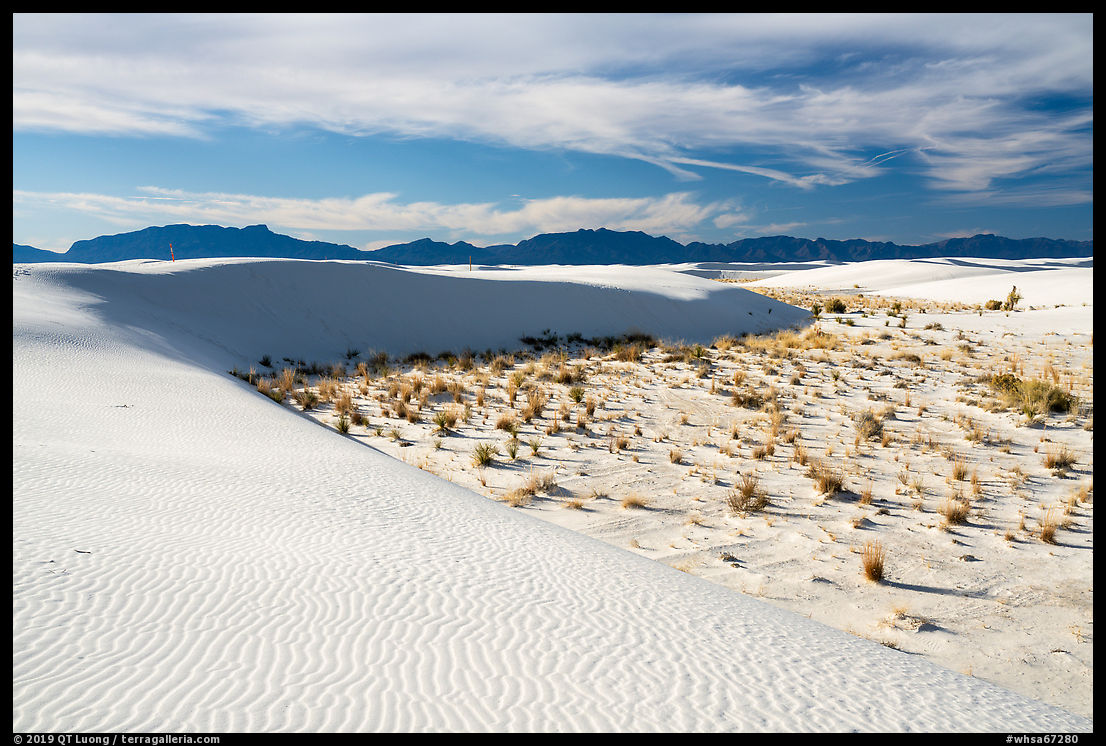
I had picked the closest campsite, #9, barely more than half a mile from the trailhead. Camping is not on sand dunes, but rather on the interdunal depressions. On this sandy landscape, I expected to be able to easily drive stakes in, but the ground turned out to be surprisingly hard.
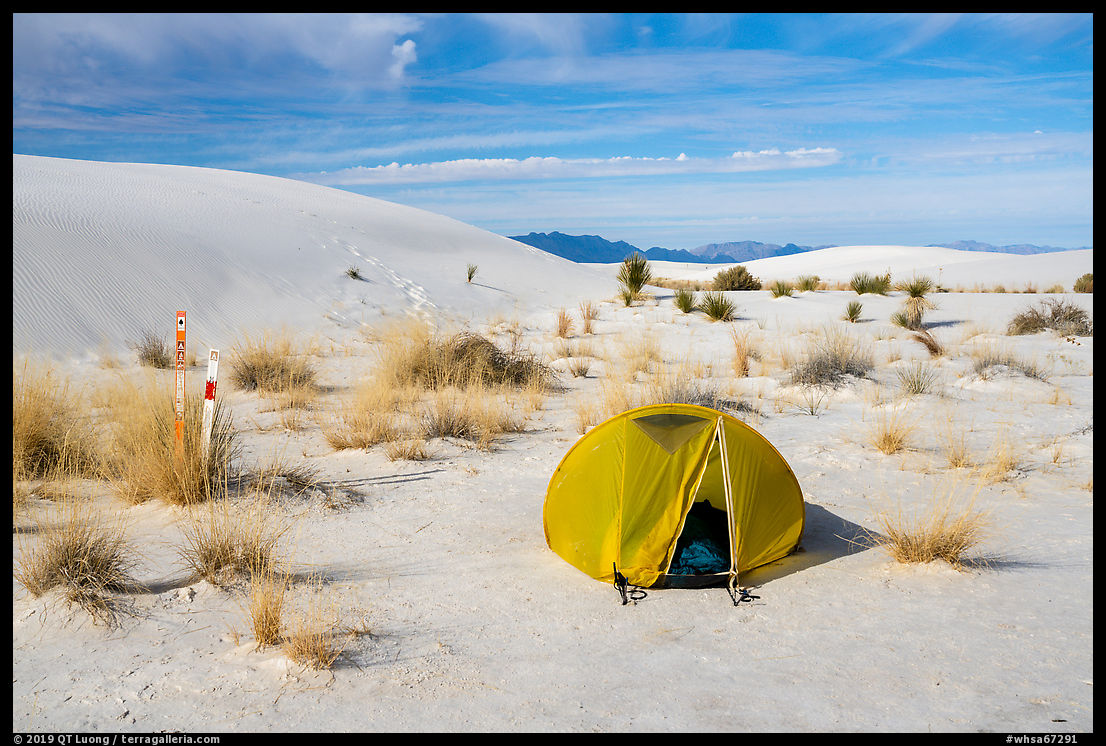
As my Stephenson tent isn’t free-standing, I ended up having to use my tripod as a mallet. Since the legs are not heavy enough, I had to hammer the stakes in by hitting them with the ball head. At $400, it makes for an expensive, yet delicate hammerhead, but at least it wasn’t my other $1,000+ head I was using. This was quite a test of how well the ballhead is built, and the over-engineered RRS didn’t seem to fare any worse save for additional scratches.
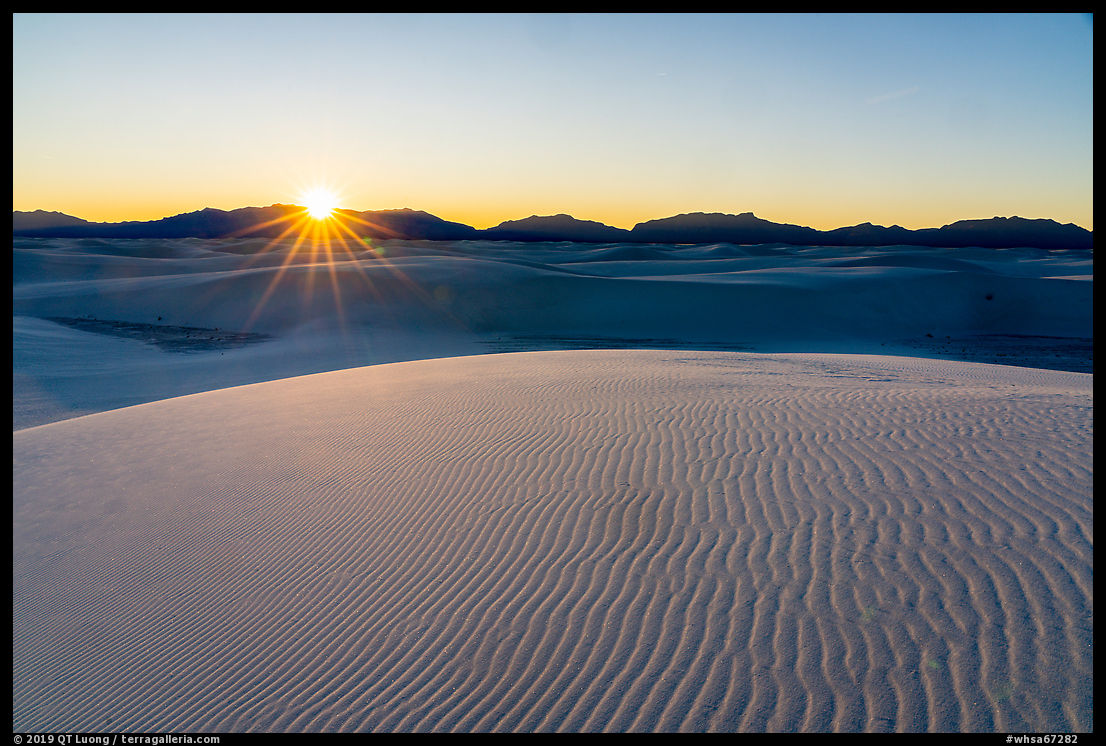
After setting up camp, I wandered around to photograph. I had to walk out quite a distance to find a high dune without any footprints. The sun set behind the mountains at 4:45 PM. But its disappearance is only the beginning at White Sands. After the sun goes down, the white sands started to reflect the delicate colors of the sky.
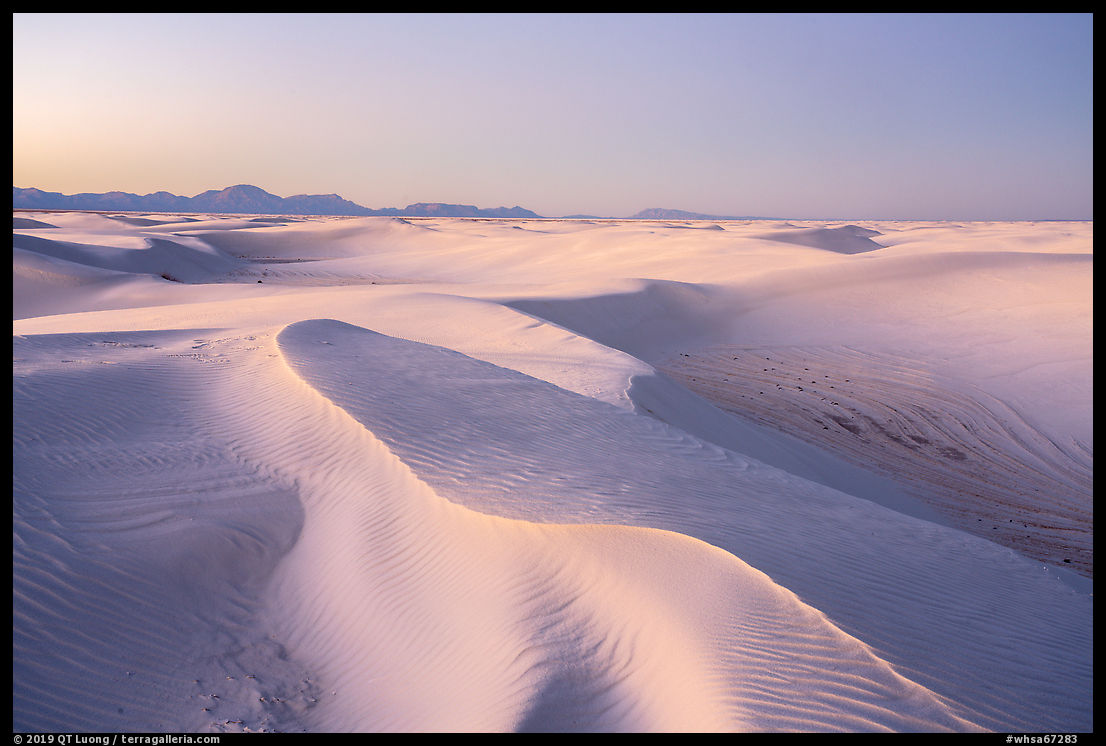
I set the large format camera and started to expose some film before 5:30 PM. Relying on the information from the ranger, I thought that I had maybe made the first photographs in White Sands National Park, and affirmed so:
White Sands became national Park #62 this evening and I was there #parkchat pic.twitter.com/InRjw73zgf
— QT Luong (@terragalleria) December 21, 2019
Back to camp, while I had been waiting for water to boil on the stove, I had photographed my campsite at 6:17 PM.
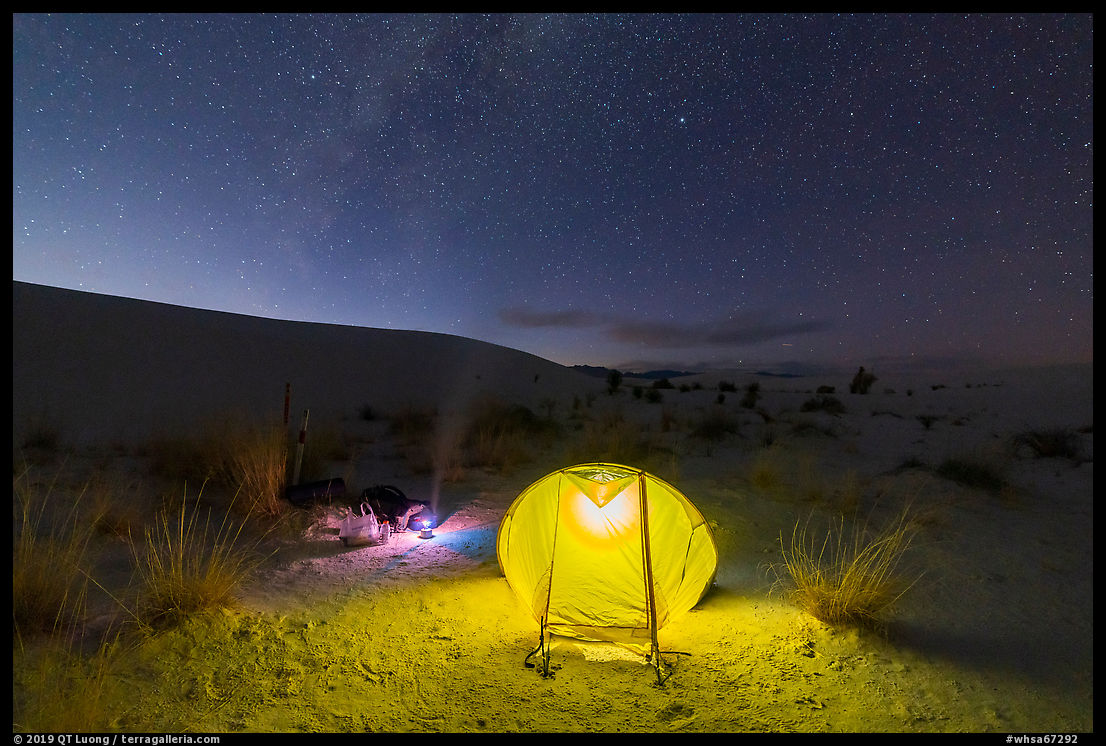
I had taken my time eating dinner, since the sky wasn’t dark enough yet to photograph the stars. Afterwards, I went looking for night photographs. The ranger had told me it was OK to walk a bit as long as I kept my tent in sight. To be able to easily spot it, I had left a camping lantern inside. I walked out of the depression and up the dune at 7:54 PM.
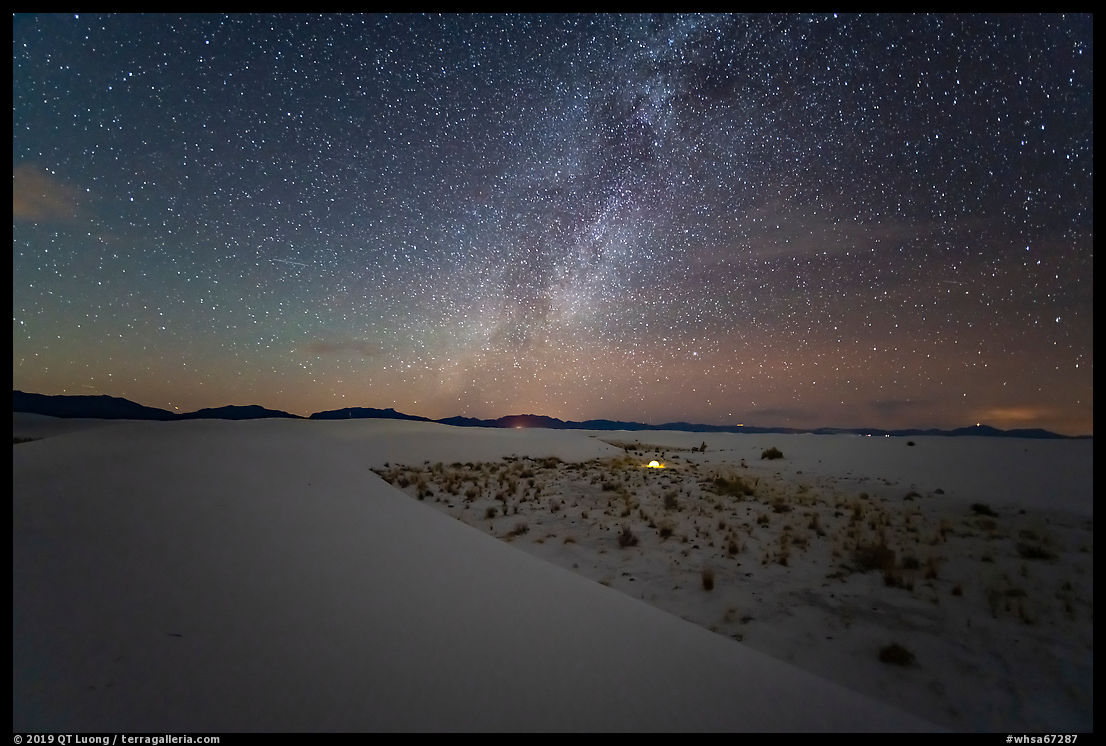
At 8:20 PM, I had returned to two Yucca plants that I had spotted earlier in the afternoon. Browsing photographs of the park, you’d think Yuccas are everywhere, but in the area where the backcountry campsites are located, they are quite sparse.
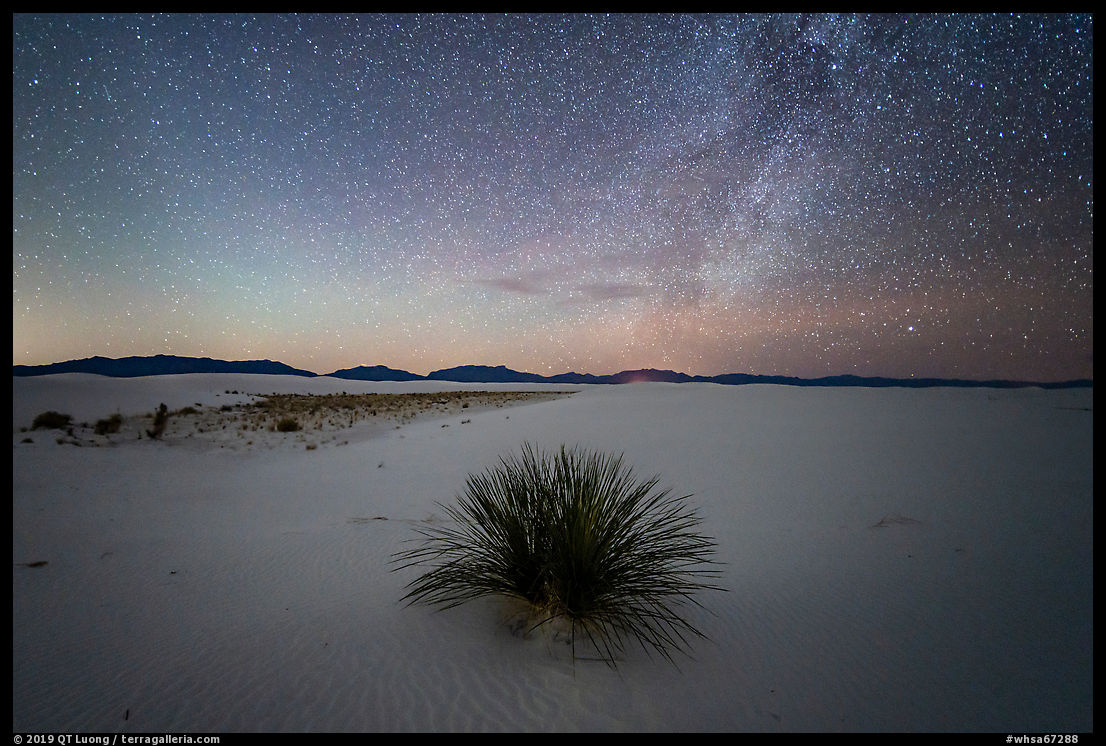
It is only when I returned home that I was able to pinpoint the exact signing time, beyond “the evening of Friday”. Regardless, I had been there photographing. However, the first photograph made in White Sands National Park is maybe not an image one would have expected. And then there is the early morning (images in this post are not in sequence) when White Sands first opened as a national park…
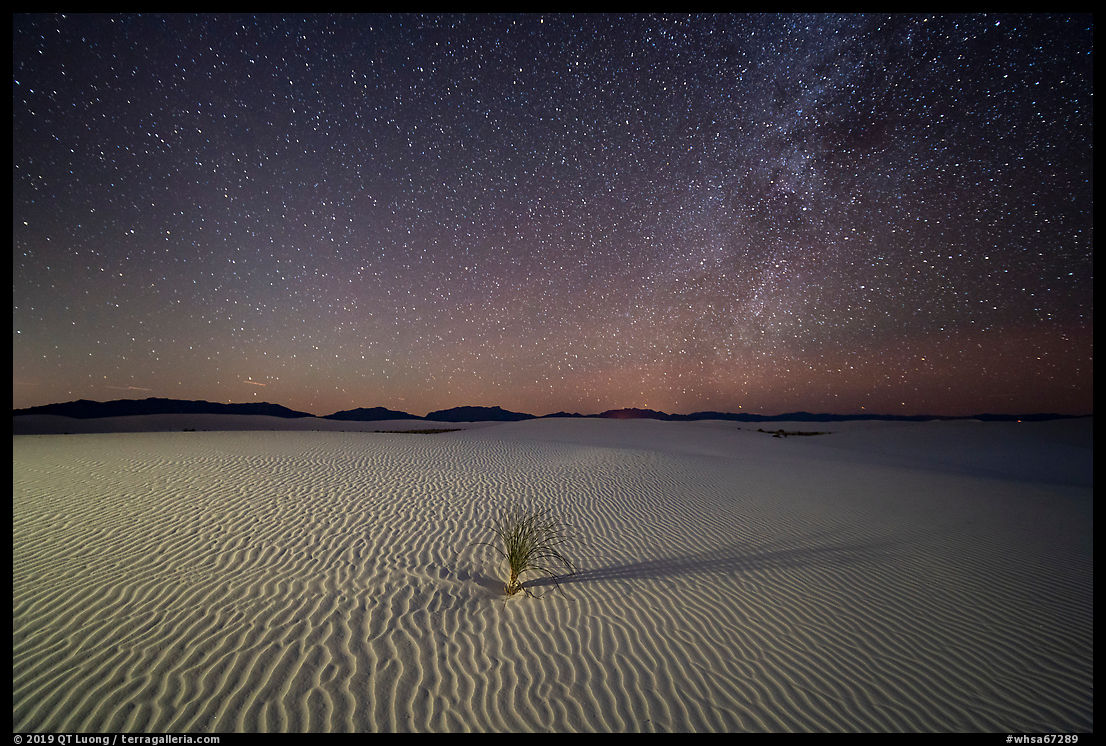
More photos of White Sands National Park
Part 2: Photographer’s Guide to White Sands National Park


Congratulations for being the first to photograph White Sands National Park!!!
Thank you. However, one can never be sure, there were half a dozen other campers in the park that night, hence my question mark. On the other hand, it is very, very unlikely than any of them had photographed the 61 national parks before…
I appreciated the detailed write up. I have enjoyed your new book. I have been to White Sands National Monument (last February), not sure if I can still count it as my 62nd National Park.
I’m heading for Antarctica the 13th, very excited about the challenges.
I look forward to seeing more of your work. Happy New Year!
The entity (place/thing/person) and its name are two different things which are easily confused. The place is the same and any photographs are a valid depiction of it, but if one purports to have specifically visited White Sands National Park (as I did), then a new visit is in order, which is a good thing, because there is always something new to discover 🙂
It’s just something incredible! Thank you for seeing these photos. Super!